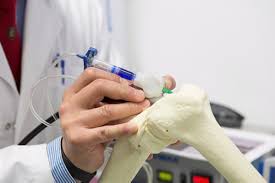
Breaking News
 Bitcoin Circular Economies and a Bridge Between Las Vegas and Peru
Bitcoin Circular Economies and a Bridge Between Las Vegas and Peru
 'Right of Return' for Israeli Child Predators Fleeing U.S.
'Right of Return' for Israeli Child Predators Fleeing U.S.
Top Tech News
 NVIDIA just announced the T5000 robot brain microprocessor that can power TERMINATORS
NVIDIA just announced the T5000 robot brain microprocessor that can power TERMINATORS
 Two-story family home was 3D-printed in just 18 hours
Two-story family home was 3D-printed in just 18 hours
 This Hypersonic Space Plane Will Fly From London to N.Y.C. in an Hour
This Hypersonic Space Plane Will Fly From London to N.Y.C. in an Hour
 Magnetic Fields Reshape the Movement of Sound Waves in a Stunning Discovery
Magnetic Fields Reshape the Movement of Sound Waves in a Stunning Discovery
 There are studies that have shown that there is a peptide that can completely regenerate nerves
There are studies that have shown that there is a peptide that can completely regenerate nerves
 Swedish startup unveils Starlink alternative - that Musk can't switch off
Swedish startup unveils Starlink alternative - that Musk can't switch off
 Video Games At 30,000 Feet? Starlink's Airline Rollout Is Making It Reality
Video Games At 30,000 Feet? Starlink's Airline Rollout Is Making It Reality
 Automating Pregnancy through Robot Surrogates
Automating Pregnancy through Robot Surrogates
 Grok 4 Vending Machine Win, Stealth Grok 4 coding Leading to Possible AGI with Grok 5
Grok 4 Vending Machine Win, Stealth Grok 4 coding Leading to Possible AGI with Grok 5
Handheld 3D printer used to grow replacement muscle tissue

We've actually been hearing a lot about "bioscaffolds" lately.
In a nutshell, they're three-dimensional pieces of biocompatible material that are implanted within the body, and that have a microstructure similar to that of the surrounding tissue. Over time, cells from that tissue migrate into the scaffold, colonizing it and reproducing. Eventually, they entirely replace the material, forming pure muscle, bone, cartilage or other tissue.
That said, pre-producing such bioscaffolds and then implanting them in muscle is quite challenging. With that in mind, scientists at the University of Connecticut developed a prototype handheld 3D printer to do the job.
It starts by depositing a gelatin-based hydrogel directly into the unwanted gap within the muscle. An integrated ultraviolet light causes that gel to cure into a bioscaffold made up of tiny muscle-like fibers, which readily adheres to the adjacent muscle tissue – no sutures are required. Muscle cells then move into the scaffolding.
In lab tests, the device proved to be effective at treating volumetric muscle loss injuries in mice.

 How Great Powers Fall Apart
How Great Powers Fall Apart
 Zionism Is What It Does
Zionism Is What It Does HERE COMES THE MOTHERSHIP
HERE COMES THE MOTHERSHIP

